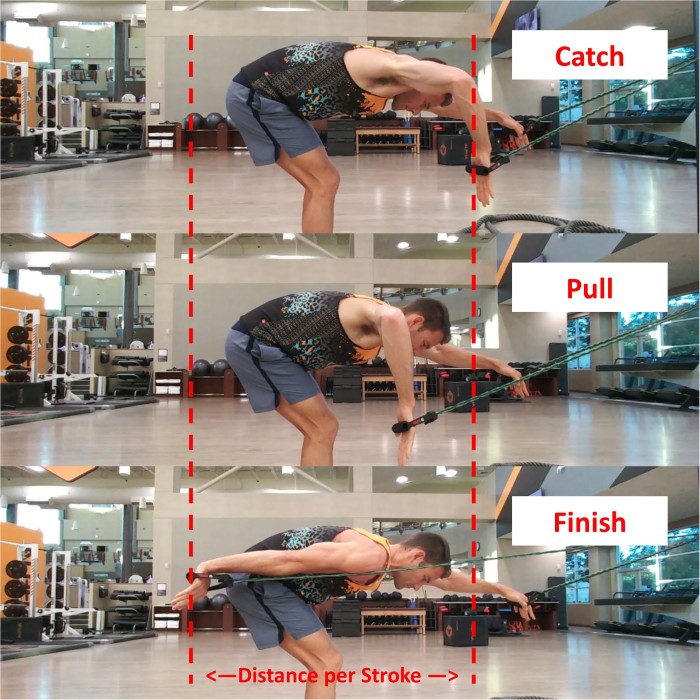By Coach Nick Morrison
When we talk about swim technique, it can quickly get overwhelming because there are a hundred different things to think about. Point your toes, keep your core engaged, rotate from the hips, keep your hands toned but not too tense. It’s a lot to think about! In order to make sense of it all, we need to focus on one thing at a time – preferably the one thing that will be most impactful in our stroke. The one thing that every swimming should focus on is developing a strong underwater pull.
A strong underwater pull is made up of three parts (I know, I know – I feel like I’m contradicting my ‘one thing’ statement already). Those are: 1) an early catch, 2) a vertical forearm pull, and 3) a late finish.
Early catch and late finish go hand in hand. Together, they make your distance per stroke as shown in the picture. The longer the distance you can cover with each stroke, the better. The catch is the point where your arm first grabs the water. You want this to be as early in the stroke as possible. The finish is the end of your stroke when your arm is fully extended and your hand is down past your hip.

Between the catch and the finish is where the underwater pull happens. The key to a strong underwater pull is a vertical forearm. Think of your elbow to fingertips as your paddle which is propelling you through the water. You need that paddle to be vertical. This ensures that you are generating power in the right direction.
The most common mistake I see athletes make is rushing the catch. They will be so excited to start the pull that they forget to catch water first and their paddle won’t be vertical in the water until their arm is even with their shoulder. This causes a couple issues. First, it dramatically shortens your distance per stroke. Second, instead of propelling their body forward through the water, they are actually lifting their shoulders out of the water toward the surface because their paddle is not yet vertical when they start to pull.
So remember, be patient at the catch. Give yourself time to get your paddle vertical in the water. Then start your pull. Maintain that vertical paddle through the pull and finish all the way down past your hip. Finally, keep in mind that every incremental improvement helps.
